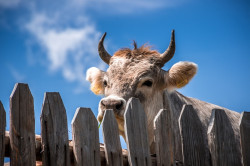Organic waste and insects: animal feed of the future?
More than the 70 percent of the protein sources required by animals bred in the European Union are imported from non-EU countries. Soybean dominates the protein supply for animal feed. This dependency is costly, subjected to market fluctuations and price rises. The European Parliament adopted a resolution stating the urgency in replacing at least part of the imported feeding stuff with alternative sources, of EU origin. One of the exit-strategies investigated by researchers is reusing food waste to feed animals, with the help of low energy consumption technologies. Considering the huge amount of food waste generated in Europe, estimated to be 88 million tons each year, the project NOSHAN identified functional feeding ingredients derived from food waste that can be adapted to the needs of animals. A free food waste database has been created, which includes the molecular characterisation performed on 42 different waste streams. Among nutritional additives successfully tested on animals were oligopectins from sugar beet pulp, peptides from rapeseed press cake and olive pomace extract, the by-product of olive pressing. Moreover, a novel process for the extraction of functional fibres from food waste was tested: direct hydrolysis of waste proteins turns them into functional ones, which are enriched in active peptides and ideal for targeting animal requirements. Taking a glance at other studies in Europe, the Slovenian start-up Eko Gea has developed a method to extract the nutrients present in the seaweed Ascophyllum nodosum, to obtain a prebiotic food. Algae worldwide are listed among the so called superfoods, nutritionally dense and particularly rich in nutrients. Bugs are in the same “super” list and they have become another target for research in animal feeding. The European project PROteINSECT focused on housefly larvae (Musca domestica), which are rich source of highly digestible proteins (between 40 and 60 percent). In July, the European Union gave the green light for processed proteins derived from insects to be used in aquaculture feed, opening a sustainable development of this kind of breeding. But there are still barriers to overcome in the development and commercialisation of insects as animal feed on a wider scale. Above all it’s a matter of safety: more research is needed to be sure that the selected bugs are good for animals. Moreover, the required production effort is not negligible. For example, you need 200,000 housefly larvae to get just one kilogram of food. Are companies ready to sustain intensive insect farming? By Gianluca Dotti
Keywords
waste, animal feeding, nutrition, livestock, energy saving, food, prebiotic food, breeding
Countries
Belgium, Germany, Spain, France, Italy, Netherlands, Slovenia, United Kingdom



